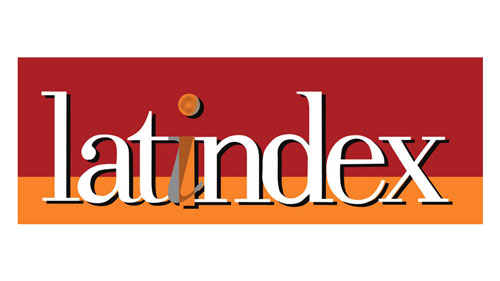Discussing empirical research on the language and culture relationship to inform English as an additional/foreign language pedagogy and teacher education
DOI:
https://doi.org/10.26512/rhla.v15i1.1416Keywords:
Culture and language relation;, English as an additional/foreign language;, Empirical studiesAbstract
Abstract
In spite of the existence of a substantial body of theoretical literature that deals with the intersection of language and culture in the field of English as a foreign/additional (EA/FL) language teaching and learning, there are very few empirical studies that investigate this issue with real teachers and learners. Therefore, the objective of this paper is to review some of those empirical studies with a view to informing additional/foreign language pedagogy and teacher education. For that, the paper, first, summarizes some of the main theoretical issues by discussing the different ways in which the relationship of language and culture has been subjacent to EA/FL pedagogies. Then, the paper shows that there are three different types of language-and-culture-related empirical studies: on coursebooks, on teacher cognition, and on classroom interaction and teacher cognition. A review of these types of studies is made by discussing their main findings. Finally, the paper brings about some implications for the field from the findings of the empirical studies and proposes some topics for further research.
Key-words: Culture and language relation. English as an additional/foreign language. Empirical studies.
Resumo
Apesar da existência de uma vasta literatura teórica que lida com a interseção entre língua e cultura na área de ensino e aprendizagem do inglês como língua adicional/estrangeira (LA/E), existem poucos estudos empíricos que investigam essa questão com professores e alunos reais. Portanto, o objetivo deste trabalho é revisar alguns desses estudos empíricos com o intuito de contribuir com a pedagogia e a formação de professores de inglês como LA/E. Para isso este trabalho, em primeiro lugar, resume algumas das principais questões teóricas, discutindo as diferentes maneiras em que a relação entre língua e cultura tem subjazido à s pedagogias do Inglês como LA/E. Em seguida, o trabalho mostra que há três tipos de estudos empíricos que lidam com a intersecção língua-cultura: estudos sobre livros didáticos, estudos sobre crenças/concepções de professores, e estudos sobre a interação de sala de aula e as crenças/concepções dos professores. Uma revisão desses diferentes tipos de estudos empíricos é feita ao se discutir suas principais descobertas. Finalmente, o artigo traz algumas implicações para a área a partir dos resultados dos estudos empíricos e propõe alguns tópicos para futuras pesquisas.
Palavras-chave: Relação entre língua e cultura. Inglês com língua adicional/estrangeira. Estudos empíricos.
Downloads
References
ANGOURI, Jo. ‘If we know about culture it will be easier to work with one another’: developing skills for handling corporate meetings with multinational participation.Language and Intercultural Communication, v. 10, n. 3, p. 206-224, 2010.
ATKINSON, Dwight. TESOL and culture. TESOL Quarterly, v. 3, n. 4, p. 625-654, 1999.
BASABE, Enrique Alejandro. A critical comparative analysis of therepresentations of the source culture, the local culture and the international culture in global, adapted and local materials.2004. 191p. Thesis(MA in British Cultural Studies & English Language Teaching)””Centre for English Language Teacher Education, The University of Warwick, Warwick, 2004.
BYRAM, Michael. Teaching and assessing intercultural communicative competence.Clevedon: Multilíngual Matters, 1997.
BYRAM, Michael;RISAGER, Karen. Language teachers, politics and cultures. Clevedon: Multilingual Matters, 1999.
BYRAM, Michael, GRIBKOVA, Bella;STARKEY, Hugh. Developing the intercultural dimension in language teaching: a practical introduction for teachers.The Council of Europe, 2002.
CAUKILL, Emma. Learning English in an English-speakingworld: examining opportunities for intercultural understanding and connectedness through representations of identities in English language textbooks. In: DASHWOOD, Ann;SON, Jeong-Bae (Eds.).Language, culture and social connectedness. Newcastle upon Tyne: Cambridge Scholars Publishing, 2011.p. 57-73.
CORBETT, John. An intercultural approach to second language education.London: Multilíngual Matters, 2003.
CORTAZZI, Martin;JIN, Lixian. Cultural mirrors: materials and methods in the EFL classroom. In: HINKEL, Eli (Ed.).Culture in second language teaching and learning. Cambridge: Cambridge University Press, 1999. p. 196-219.
ERIKSON, Frederick. Culture in society and in educational practice. In: BANKS, James; BANKS, Cherry (Eds.). Multicultural education: issues and perspectives. Boston: Allyn and Bacon, 1997. p. 30-60.
FRANÇA, Oldine. O discurso e a prática do professor frente ao ensino de cultura em Língua Estrangeira (inglês) e os Parâmetros Curriculares Nacionais.2007. 159p. Thesis(MA Applied Linguistics) ”“Institutode Letras, Universidade de Brasília, Brasília, 2007.
FERREIRA, Aparecida de Jesus;CAMARGO, Mábia. Racismo cordial no livro de Língua Inglesa aprovado pelo PNLD. Revista da Associação Brasileira de Pesquisadores(as) Negros(as) ”“ABPN, v. 6, p. 177, 2014.
FORLIN, Carla Maria. Concepções sobre língua e cultura na formação continuada de professores de língua inglesa: uma leitura do Núcleo de assessoria pedagógica da UFPR.2009. 91p. Master’s Thesis(MA in Letras)”“Instituto de Letras, Universidade Federal de Paraná, Curitiba, 2009.
GEBIEN, Karina. A study of teachers’ perceptions on cultural and intercultural aspects in public schools in Blumenau.2013. 110p. Master’s Thesis (MA in English: Language and Literature Studies)”“Centrode Comunicação e Expressão: Universidade Federal de Santa Catarina, Florianópolis, 2013.
GIMENEZ, Telma. Eles comem cornflakes, nós comemos pão com manteiga: espaços para a reflexão sobre cultura na sala de aula de língua estrangeira. IN: IX Encontro de Professores de Línguas Estrangeiras (EPLE), 2002.Londrina. Anais...Londrina, APLIEPAR, 2002. p. 107-114.
GRAY, John. The ELT coursebook as cultural artefact: how teachers censor and adapt. ELT Journal,v. 54, n. 3, p. 274-283, 2000.
HOLLIDAY, Adrian. Small cultures. Applied Linguistics,v. 20, p. 237”“264, 1999.
JUDD, Elliot,TAN, Lin;WALBERG, Herbert.Teaching additional languages: educational practices.Series 6. Belgium: Languages and Linguistics Clearinghouse, 2001.
KILICKAYA, Ferit. Guidelines to evaluatecultural content in textbooks. The Internet TESL Journal,v. 12. 2004. Available at: <http://iteslj.org/Techniques/Kilickaya-CulturalContent>.Accessedon10May 2012.
KRAMSCH, Claire. Context and culture in language teaching. Oxford: Oxford University Press, 1993.
KRAMSCH, Claire. The cultural component of language teaching. Zeitschrift für Interkulturellen Fremdsprachenunterricht, 1996. Available at:<http://www.spz.tu-darmstadt.de/projekt_ejournal/jg_01_2/beitrag/kramsch2.htm>. Accessedon21 March2010.
KRAMSCH, Claire. Language and culture.Oxford: Oxford University Press, 1998.
KUMARAVADIVELU, B. Cultural globalization and language education.New Haven: Yale University, 2008.
LESSARD-CLOUSTON, Michael. Chinese teachers' view of culture in theirEFL learning and teaching: acase study. Language, Culture and Curriculum,v.9, n.3, p. 220-225, 1996.
LIDDICOAT, Anthony;SCARINO, Angela. Intercultural language teaching and learning.New York: Wiley and Sons, 2013.
LO BIANCO, Joseph;LIDDICOAT, Anthony;CROZET, Chantal. Intercultural competence: from language policy to language education. In: LO BIANCO, Joseph;LIDDICOAT, Anthony; CROZET, Chantal. (Eds.) Striving for the third place: intercultural competence through language education(p. 1-22). Melbourne: Language Australia, 1999.
MATSUDA, Aya. Representations of users and uses of English in beginning Japanese EFL textbooks. JALT Journal, v. 24, n.2, p. 183-200, 2002.
MENARD-WARWICK, Julia. Co-constructing representations of culture in ESL and EFLclassrooms: discursive faultlines in Chile and Colombia. The Modern Language Journal, v. 9, n. 1, p. 30-45, 2009.
OLIVEIRA, Adelaide. O ensino de L2 e cultura para o desenvolvimento da competência comunicativa intercultural: uma proposta transdisciplinar. In: VI Congresso Internacional da ABRALIN, 2009. João Pessoa. Anais...João Pessoa, ABRALIN, 2009, p. 11-21.
RIO GRANDE DO SUL. Secretaria da Educação. Departamento Pedagógico. Referenciais curriculares do Estado do Rio Grande do Sul.Porto Alegre: Secretaria da Educação, 2009.
RISAGER, Karen. Cultural references in European textbooks:an evaluation of recent tendencies. In: BUTTJES, Dieter;BYRAM, Michael (Eds.).Mediating languages and cultures:towards an intercultural theory of English language teaching.Clevendon and Philadelphia: Multilingual Matters Ltd, 1990.p. 181-192.
RISAGER, Karen. Language and culture pedagogy:from a national to a transnational paradigm.Clevedon: Multilíngual Matters, 2007.
RYAN, Phyllis. Sociological goals for foreign language teaching and teachers’ metaphorical images of culture.Foreign Language Annals,v.29, n.4, p. 571-86, 1996.
SARACENI, Mario. Relocating English: towards a new paradigm for English in the world. Language and Intercultural Communication,v.9, n.3, p.175-186, 2009.
SARMENTO, Simone. Aspectos culturais presentes no ensino da língua inglesa. In: SARMENTO, Simone;MULLER, Vera (Eds.), O ensino do inglês como língua estrangeira:estudos e reflexões.Porto Alegre: APIRS, 2004. p. 241-266.
SCHULZ, Renate. The challenge of assessing cultural understanding in the context of foreign language instruction. Foreign language annals,v. 40, n. 1,Education Module, p. 9-26, 2007.
SHARDAKOVA, Marya;PAVLENKO,Aneta. Identity options in Russian textbooks. Journal of Language, Identity and Education, v.3, n.1, p. 25-46, 2004.
STERN, Hans Heinrich. Issues and options in language teaching. Oxford: Oxford University Press, 1992.p. 205-242.
STAPLETON, Paul. Culture role in TEFL: an attitude survey in Japan. Language, Culture & Curriculum, v. 13, n.3, p. 292-30, 2000.
VOLPATO, Mayara. Interculturality in additional language teaching, reality or just another dream?2014. 110p. Thesis (MA in English: Language and Literature Studies)”“Centro de Comunicação e Expressão: Universidade Federal de Santa Catarina, Florianópolis, 2014.
WOODS, Devon. Teachercognition in language teaching:beliefs, decision-making and classroom practice.Cambridge: Cambridge University Press, 1996.
Downloads
Published
How to Cite
Issue
Section
License
Articles published by the Journal Horizontes de Linguística Aplicada are licensed under a Creative Commons Attribution-NonCommercial-NoDerivatives 4.0 International License.
By publishing in Horizontes de Linguística Aplicada, authors agree to the transfer of economic copyright to the journal. Authors retain their moral rights, including the right to be recognized as the creators of the work.
Authors and readers are free to:
Share — copy and redistribute the material in any medium or format
Under the following terms:
- Attribution — You must give appropriate credit , provide a link to the license, and indicate if changes were made . You may do so in any reasonable manner, but not in any way that suggests the licensor endorses you or your use.
- NonCommercial — You may not use the material for commercial purposes .
- NoDerivatives — If you remix, transform, or build upon the material, you may not distribute the modified material.
- No additional restrictions — You may not apply legal terms or technological measures that legally restrict others from doing anything the license permits.





